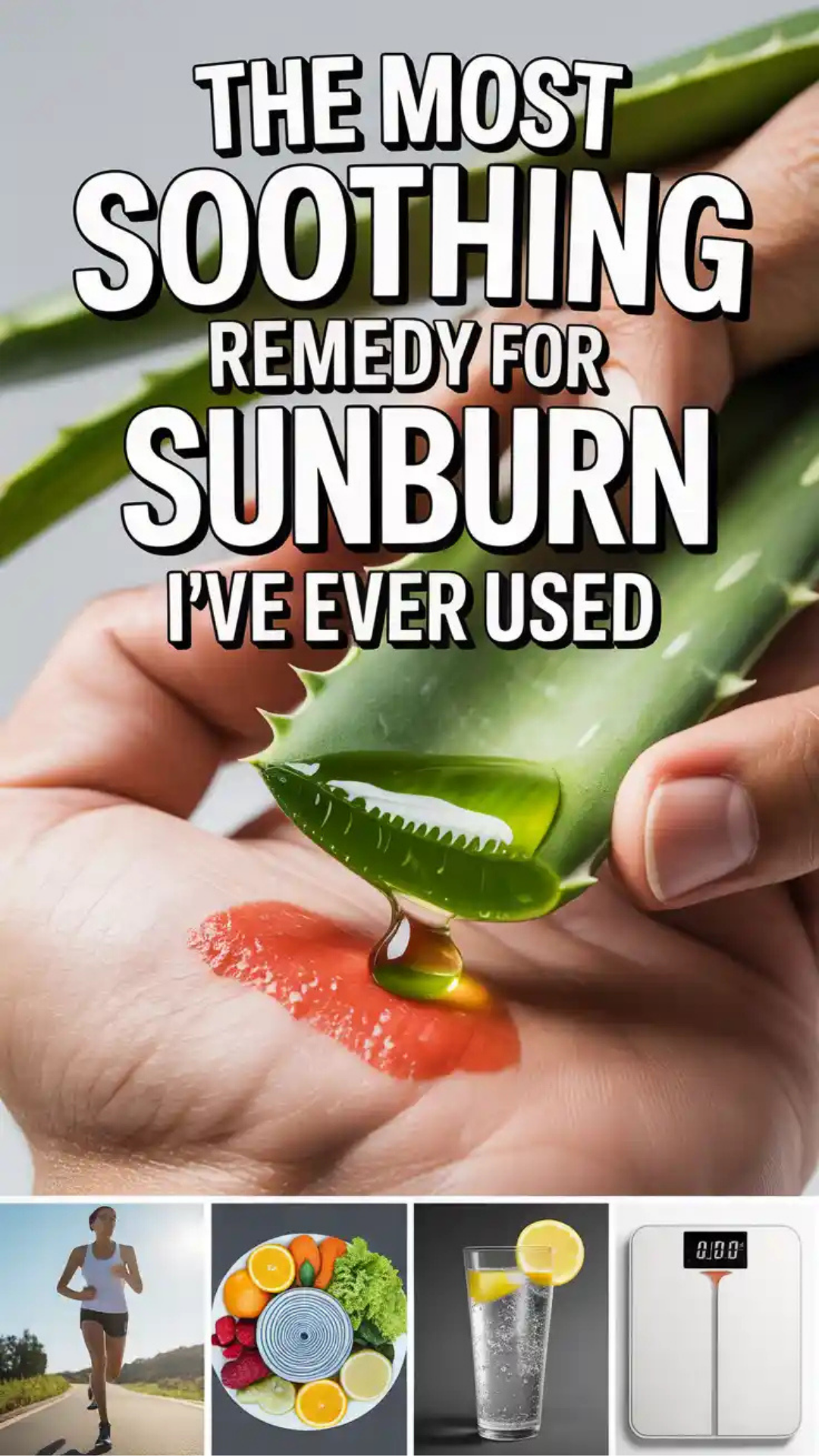Sunburn relief doesn’t have to come from store-bought gels. I found a natural remedy that calms skin, cools redness, and speeds comfort without harsh chemicals. This simple solution hydrates, protects, and makes the sting fade faster than I expected, and it’s now my go-to every summer.

- Why sunburn relief needs more than just cooling
- The natural remedy I swear by for soothing burns
- Step-by-step guide: how I apply it for best results
- Supporting remedies that help recovery along
- Everyday habits to protect skin from burning again
- Common mistakes people make with sunburn care
- When to seek medical attention for sunburns
Why sunburn relief needs more than just cooling
Most people reach for ice packs or cold water, but cooling is only the first step in sunburn care. While it helps with initial sting, true recovery comes from rehydrating the skin barrier, calming inflammation, and protecting the skin so it can heal properly. Without these steps, redness lingers and peeling becomes more severe.
The hidden impact of sunburn on skin health
Sunburn isn’t just surface redness. UV radiation penetrates the skin, causing cellular damage and inflammation. This increases sensitivity, drains moisture, and speeds up premature aging. That’s why a good sunburn remedy should not only cool but also restore balance to damaged skin.
The role of hydration
Dehydrated skin after sunburn struggles to repair itself. A remedy that hydrates both from inside (fluids) and outside (soothing applications) gives faster relief and reduces peeling.
The natural remedy I swear by for soothing burns
After trying many products, the most soothing and reliable remedy I’ve found is pure aloe vera gel—straight from the leaf or a clean, additive-free source. It instantly cools, hydrates deeply, and helps reduce redness.
Why aloe works so well
- High water content replenishes lost hydration.
- Natural anti-inflammatory compounds reduce swelling.
- Polysaccharides support skin repair.
- Gentle texture soothes without sticking or burning.
Other remedies that pair well with aloe
- Coconut water – rehydrates internally.
- Oatmeal compress – calms itching.
- Coconut oil (applied later, once heat fades) – locks in moisture.
Step-by-step guide: how I apply it for best results
Getting the most from this remedy means applying it correctly. Here’s my exact process that works every time:
- Cool the skin first – Take a short cool (not ice-cold) shower. Pat dry gently.
- Apply aloe vera generously – Either cut open a leaf and scoop out gel, or use pure store-bought gel.
- Let it absorb fully – Don’t rub harshly; allow the gel to soak in.
- Reapply often – I refresh the layer every 2–3 hours.
- Hydrate from inside – Drink water or coconut water alongside topical care.
Pro tip:
Keep aloe vera gel in the fridge. Cold aloe doubles the soothing effect.
Supporting remedies that help recovery along
While aloe is my star, combining it with a few extra remedies speeds recovery:
- Oat baths: Blend oats into powder and add to lukewarm bathwater. This calms irritation.
- Cucumber slices: Naturally cooling and hydrating when placed on affected areas.
- Honey mask: Small amounts on less sensitive areas can help moisturize deeply.
- Chamomile tea compress: Brew, cool, and apply with soft cloth.
What to avoid
- Ice directly on skin (causes more damage).
- Harsh soaps and scrubbing.
- Heavy oils while skin still radiates heat.
Everyday habits to protect skin from burning again
Prevention is always better than cure. Here are my non-negotiable habits:
- Apply broad-spectrum sunscreen, SPF 30+, even on cloudy days.
- Reapply every 2 hours when outdoors.
- Wear breathable long sleeves and a wide hat in strong sun.
- Stay in shade during peak hours (10 a.m.–4 p.m.).
- Keep skin moisturized daily with lightweight natural lotion.
Common mistakes people make with sunburn care
Even with the best remedies, these mistakes delay healing:
- Using petroleum jelly too soon—it traps heat.
- Popping blisters—they protect healing skin.
- Forgetting hydration—internal fluids are essential.
- Using fragranced lotions—irritation worsens redness.
When to seek medical attention for sunburns
Natural remedies help mild to moderate sunburns. But seek medical help if you notice:
- Large blisters covering big areas of skin.
- Severe pain or fever.
- Dizziness, chills, or dehydration symptoms.
- Sunburn that doesn’t improve in a few days.
Frequently Asked Questions
Is aloe vera safe for all skin types?
Yes, pure aloe is safe for most. Do a patch test if you have very sensitive skin.
Can coconut oil replace aloe vera?
Not initially. Aloe cools and hydrates, while oil is best for locking in moisture later.
How long until sunburn fades with this remedy?
Most mild burns improve within 2–3 days. Consistency with aloe and hydration speeds healing.
What if I don’t have aloe vera?
Use cool cucumber slices, oatmeal baths, or chilled chamomile compresses as effective alternatives.
Does sunscreen prevent sunburn completely?
Not fully. Sunscreen reduces risk but should always be combined with shade, clothing, and time management outdoors.